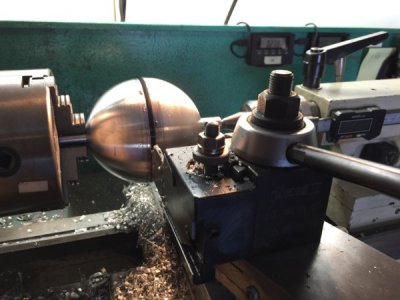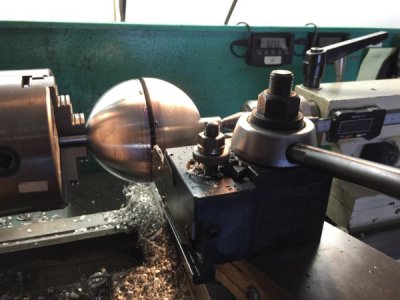- Joined
- Jan 22, 2014
- Messages
- 578
I am not sure I agree. My small south bend lathe does very well at parting. Admittedly it was learning how to properly part. My problem was being a fraction too low, thinking it would cut better. I learned after a few mistakes that being low was bad , being low often caused a disaster since the piece would lift and all hell would break loose. Being high by a small amount was acceptable until it stopped cutting, it would not lift.
Being dead on, would be best. But there might still be a lift danger .. So being high by about .0005 might not be a bad thing. Being dead on, I still worry .. Being low.. never.
I agree that you never want the cutting tip to be anywhere near "low" of center. I run mine a bit just above. Also, I disagree that smaller, hobby lathes are not capable of parting??? I suggest that you look at my 4" Hollow Vessel project and see how the tool post is set up on the carriage/cross slide, and how I cut an 1/8" pass through a 4" ball of 6061 aluminum. Granted, it had to be finished afterward, but it does cut it and I just allow a bit extra material to clean it up.
I use an Aloris (kind of expensive) with replaceable tool bits, like yours. Align the tool, post, compound and cross-slide directly over the carriage and under the tool for maximum support. Use a live center to prevent flexing. Always try to keep the part being cut as short to the chuck as possible. Some say no more than 1" extension for every 1" of diameter (or something like that) to minimize deflection. When I cut the 4" ball, I only chucked a 1 1/2" L X 5/8" Diameter tenon on the drive end. I took my time with a couple of thou at a time, ran the spindle as slow as the machine allowed and used cutting oil to keep the tool happy. It took about 30-40 minutes and was still pistol hot when I got done.



